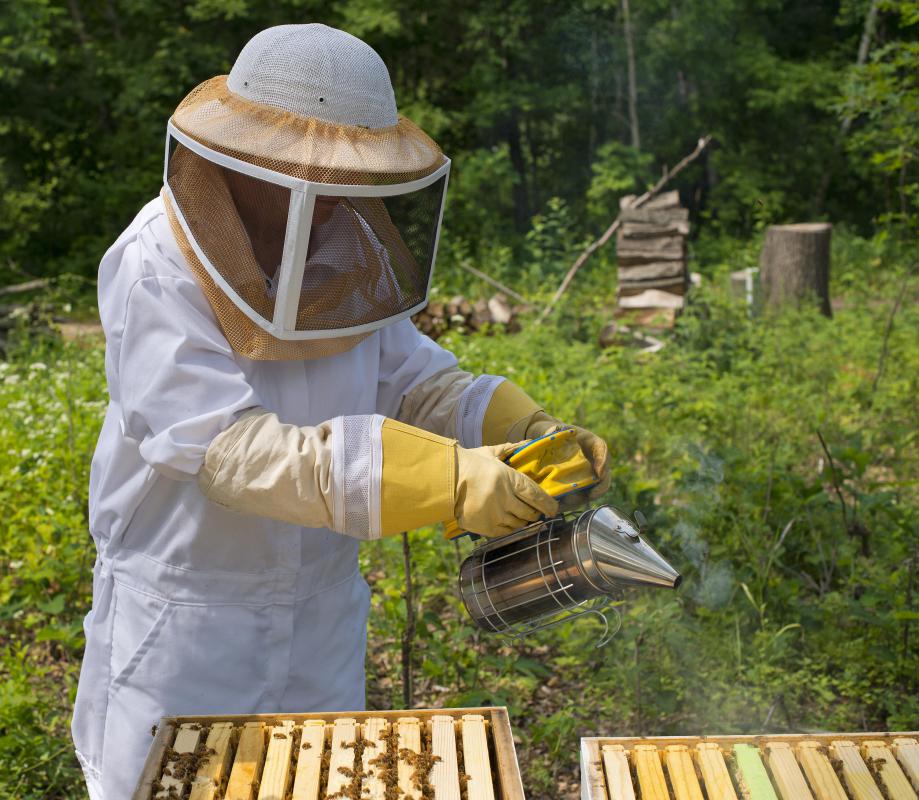At AllThingsNature, we're committed to delivering accurate, trustworthy information. Our expert-authored content is rigorously fact-checked and sourced from credible authorities. Discover how we uphold the highest standards in providing you with reliable knowledge.
What is Colony Collapse Disorder?
Colony Collapse Disorder (CCD) is a serious ailment which affects bees. When a colony experiences the condition, the worker bees mysteriously fly off, never to return. The remaining bees in the colony starve to death, often rejecting offered and stored food, and many of the bees also appear to be severely diseased. Colony Collapse Disorder became a major news item in 2006, when the extent of the condition began to be fully realized. Many beekeepers warned that the condition could threaten the stability of the food supply, generating mass concern among many nations.
The first cases of Colony Collapse Disorder were noticed in the Eastern United States in 2006. Shortly afterwards, European beekeepers began to report similar cases, and the problem appeared to have spread to Asia by 2007. In all cases, beekeepers were completely puzzled about the origins of the condition, and some lost as many as 90% of their colonies. The mysteriously vanishing bees started making major headlines in late 2006, as human life is largely dependent on bee pollination of crops.

Several things characterize Colony Collapse Disorder. The first and most noticeable is the abrupt disappearance of worker bees, which leave the hive and never return. The queen bee remains present in the hive, along with the drones, but despite abundant sources of food, these bees begin to die off. Other bees are reluctant to invade the hive for the purposes of stealing honey and nectar, and pests which normally take over beehives generally infest it at a much slower rate. These circumstances suggest that Colony Collapse Disorder appears to be linked to some sort of sickness which confuses the complex culture of the bees.

Numerous causes for the condition have been suggested, including fungal infection, nutrition issues, genetically modified crops, climate change, and even electromagnetic radiation. Study was unable to fully prove that any of these conditions caused the disease, although they certainly may have been related. In September of 2007, scientists published a study linking Colony Collapse Disorder to the Israeli Acute Paralysis Virus (IAPV), a virus carried by a parasite which often attacks honeybees.

While Colony Collapse Disorder may seem like a whimsical or far-off problem to people in urban areas, it is an issue of deep concern to farmers and gardeners. Disappearing bees means a decreased rate of fertilization, which could have a serious impact on both food and ornamental crops. The rapid spread and severity of Colony Collapse Disorder are also issues of concern, as it appears to be difficult to confine or address. Scientists hope that additional study on the problem may yield ways to prevent or treat it.
Frequently Asked Questions
What is Colony Collapse Disorder (CCD) in bees?

Colony Collapse Disorder is a phenomenon where honeybee colonies abruptly die off, with the majority of worker bees disappearing and leaving behind a queen, food, and a few nurse bees to care for the remaining immature bees. This disorder has significant implications for agriculture and ecosystems, as bees are crucial pollinators.
What are the main causes of Colony Collapse Disorder?
The exact cause of CCD is not fully understood, but it is believed to be a combination of factors including pesticides, particularly neonicotinoids, varroa mites, viruses, environmental stressors, and poor nutrition due to habitat loss. Research continues to investigate the synergistic effects of these stressors on bee health.
How widespread is Colony Collapse Disorder?
CCD has been reported in various countries across Europe, Asia, and North America. In the United States, beekeepers began reporting losses of 30-90% of their hives in 2006. The disorder has since become a global concern, with numerous studies aiming to quantify and mitigate its impact on bee populations.
What impact does CCD have on agriculture and the environment?
Bees play a vital role in pollinating many crops, and their decline can lead to reduced yields and increased production costs. According to the USDA, honeybees pollinate approximately $15 billion worth of crops in the U.S. annually. CCD threatens food security and biodiversity, as many plants rely on bees for reproduction.
Are there any solutions or methods to prevent Colony Collapse Disorder?
Preventing CCD involves integrated pest management to control varroa mites, reducing the use of harmful pesticides, improving bee nutrition through habitat enhancement, and breeding resistant bee strains. Beekeepers and researchers are working together to develop best practices to maintain healthy bee populations.
Can individuals do anything to help combat CCD?
Individuals can help by planting bee-friendly gardens, avoiding the use of pesticides, supporting local beekeepers by buying their honey, and advocating for policies that protect pollinator health. Creating awareness and educating others about the importance of bees can also contribute to efforts against CCD.
AS FEATURED ON:
AS FEATURED ON:














Discussion Comments
We began in the bee's business almost 50 years ago, and I know we will enjoy your advice.
Post your comments